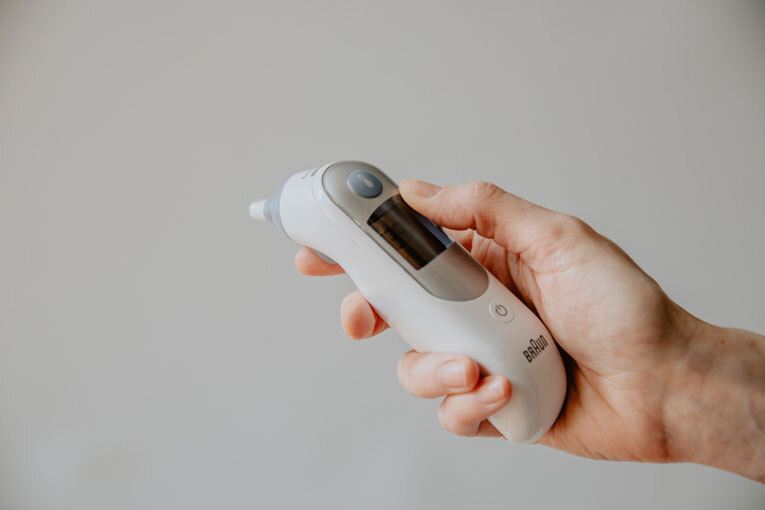Employer's guide to Statutory Sick Pay (SSP)
22 Apr 2020

Sick leave isn’t a particularly glamorous part of business, but it can cause a lot of confusion for employers. It can be a costly problem for many organisations, especially when you’re not sure what your obligations around sick pay are.
This is also a very timely topic, since the coronavirus outbreak has forced an increasing number of people to access sick pay. These are people that have been struck down by the illness or who need to self-isolate because they or someone in their home is showing symptoms.
If you’re struggling to get your head around how much you need to pay employees that are off sick and for how long, we’ve got the answers here.
This article covers
What Is Statutory Sick Pay (SSP)?
Statutory Sick Pay (SSP) is a sum of money paid by an employer to any employees who are off sick for more than four days in a row (up to a maximum of 28 weeks).
As an employer, you are only responsible for paying SSP if you pay Class 1 National Insurance contributions for your employee. This includes any employee that you would normally pay NI for were it not for their age or level of earnings.
What is the SSP rate?
For the current tax year, the SSP rate is £95.85 per week. This is the minimum statutory amount that employees have to be paid.
You can offer your employees more than the statutory amount if your company has a sick pay scheme. These schemes are commonly referred to as ‘contractual’ or ‘occupational’ sick pay and must be included in your employee’s contract.
You need to start paying your employee from the fourth day they are off sick (the exception being sick leave due to coronavirus – see ‘SSP for coronavirus’ below). The first three days of sick leave are known as Waiting Days.
You’ll need to pay employees for each ‘qualifying day’ they are off work, i.e. the days they are off sick that they would normally have worked.
Employers typically pay SSP in the same way they pay regular wages. So, if you pay salaries on a weekly basis or monthly basis, it’s advisable to stick to the same payday. Remember that SSP is treated as earned income so you will need to deduct any income tax and national insurance contributions that are due.
Note that annual leave is accrued while your employee is off work sick and this can be taken during sick leave.
With the exception of sick pay for coronavirus, employers are not able to claim back SPP from the government.
How long can Statutory Sick Pay be claimed for?
The maximum period employees can claim SSP for is 28 weeks. After this, they will no longer qualify for it.
Linked periods of sickness
Sometimes, you’ll have employees that experience regular bouts of sickness. These periods can be “linked” together if they last for four or more days on each occasion and are eight weeks or less apart. Under these circumstances, there are no Waiting Days after the first period of sick leave and your employee can receive SSP from the first day they are off work.
Employees no longer qualify for SSP if they have a series of “linked” illnesses that last for more than three years in total.
SSP calculator
The government has a useful SSP calculator that can help you work out how much sick pay your employees qualify for. It asks simple questions like whether the employee is receiving any other kind of statutory pay, such as Maternity or Paternity pay, and whether they told you they were sick in the designated time frame (this is usually seven days).
If the employee works irregular hours or has more than one linked period of sickness, you’ll have to work out how much SSP they’re entitled to manually. This guide will help you to do that.
Who is eligible for Statutory Sick Pay?
For an employee to qualify for SSP, they must earn at least £120 per week and have been ill for a minimum of four days in a row - this can include non-working days, too. Employees must also inform their employers if they are sick and provide them with a doctor’s ‘fit note’ if they are off work for more than seven days.
Employees do not qualify for SSP if they’ve already used up their maximum 28 weeks of SSP or are currently receiving Statutory Maternity Pay. New employees can still access SSP even if they haven’t yet received eight weeks’ pay.
SSP for coronavirus
The rules for accessing SSP due to COVID-19 are slightly different than for other illnesses.
If your employee isn’t able to work because they are self-isolating, they can get SSP from the first day they are off work rather than the fourth. Employees still need to meet the SSP eligibility criteria and they still need to have been off work for a minimum of four days. This is only valid for employees that began self-isolation on or after 13 March 2020. For those who started self-isolation before then, SSP will begin from the fourth day like it would with any other sickness.
For SPP related to coronavirus, your employee doesn’t need a ‘fit note’ from a doctor. Instead they need to go to NHS 111 online and obtain an ‘isolation note’.
Unlike for other illnesses, you can reclaim up to two weeks of SPP you’ve paid to employees that are off work due to coronavirus. This applies as long as the period of self-isolation started from the 13 March 2020 and you have less than 250 employees.
Statutory Sick Pay form SSP1
If your employee is not entitled to SSP for any reason, you must send them an SSP1 form. This is also the case if your employee is coming to the end of their SSP.
Form SSP1 enables employees to claim for social security benefits such as Universal Credit and Employment and Support Allowance.
Understanding SSP is important for employers
Statutory Sick Pay is a necessary part of running a business. People get sick, it’s a fact. Knowing what your obligations are and understanding what your employees need to do to qualify for SSP is important for keeping both your business and its workers safe, healthy, and ticking over.


